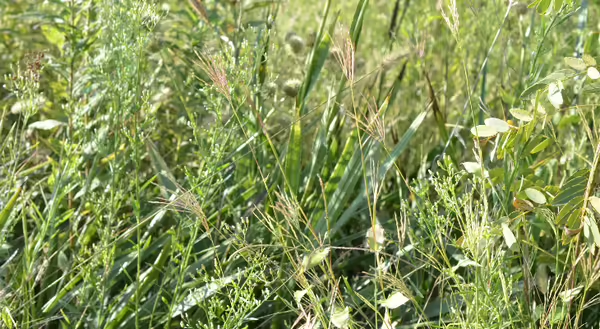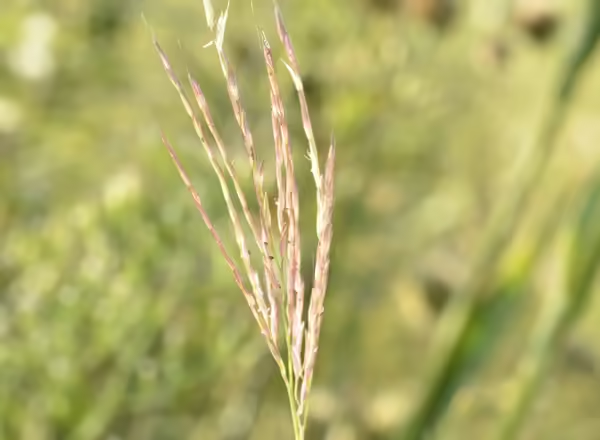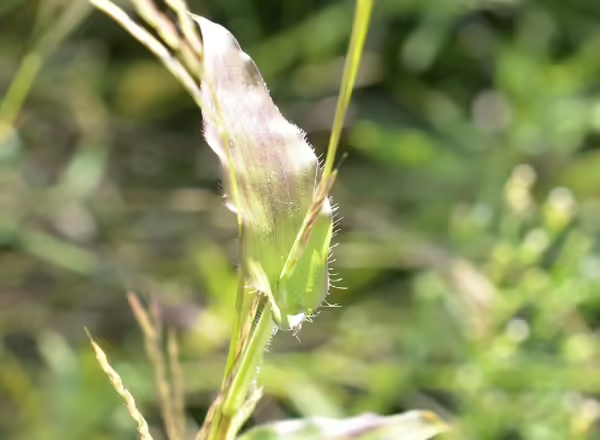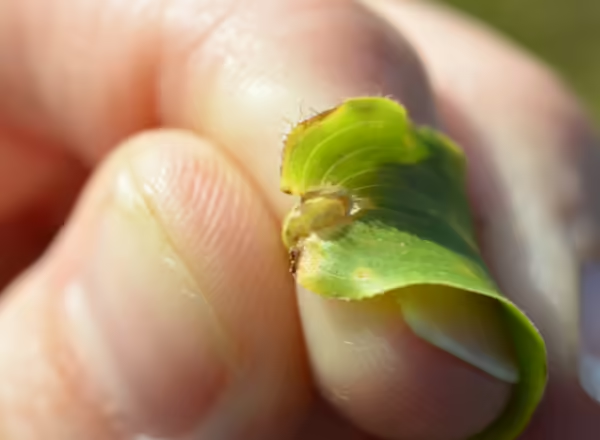
While identifying plants at a prairie reconstruction last month, I came across a new grass that I’ve not seen before. Unfortunately, it is an invasive grass called Small Carpetgrass (Arthraxon hispidus). According to EDDMapS, this is only the fourth report of this grass in Illinois, and all reports are in the southernmost part of the state. However, it is found in 26 other states in the U.S., mostly in the eastern part of the country.
How was it introduced?
We’re not sure how Small Carpetgrass made its way from Asia to the United States, but it was likely introduced accidentally. Since the early 1900’s it has spread through the eastern U.S., preferring wetter habitats with running water that can help its seeds disperse.
There’s a good chance it’s underreported, so let’s take a look at how to identify this grass.

Identification Characteristics
Small Carpetgrass is an annual grass with weak stems that flowers in late summer. It forms dense mats due to its creeping nature, with the lower nodes of the stems rooting and allowing the grass to spread. It is short in size, usually under 2 feet tall.
The leaves of this grass are quite broad for its size, about ¼ to ½ inch broad, and they taper to a point at their tips while their bases wrap around the stems. You can find short hairs all along the edges of the leaf blades and sheaths. It has a short membranous ligule.
The flowering structure of Small Carpetgrass is a finger-like collection of spikelets, or a raceme. It has a turkey-foot shaped seedhead like Big Bluestem, but on a much smaller scale. The spikelets have short awns.



Management
What should you do if you find this grass? In the invasive species world, we say “early detection, rapid response.” If you find a small patch, work to eradicate it before it can really establish and spread. Make sure to report your finding. I use EDDMAPs to report new records of invasive species (like this grass!).
If you have a small enough patch, you can hand pull the plants. If you have a larger area to treat, look for a grass specific herbicide. Always read and follow herbicide label instructions.
Source: USDA Forest Service Weed of the Week – Jointhead Grass
Never miss a new post! Sign up for our email list.
ABOUT THE AUTHOR: Erin Garrett is a Natural Resources, Environment, and Energy Educator for University of Illinois Extension serving Alexander, Johnson, Massac, Pulaski, and Union counties. Erin develops and delivers high impact programming to adults and youth to help them develop an appreciation for natural resources and to empower them to make small changes to positively impact the environment. Erin’s programming focuses on why homeowners should consider choosing native plants, how to support native pollinators, how to identify grasses, how to identify and manage invasive species, and developing an appreciation for prairie ecosystems.
ABOUT THE BLOG: Grasses at a Glance dives into grass identification, focusing on tips and tricks that make grass identification possible. Get information about native and non-native species, how to tell look-alikes apart, and which grasses you can find in Illinois.